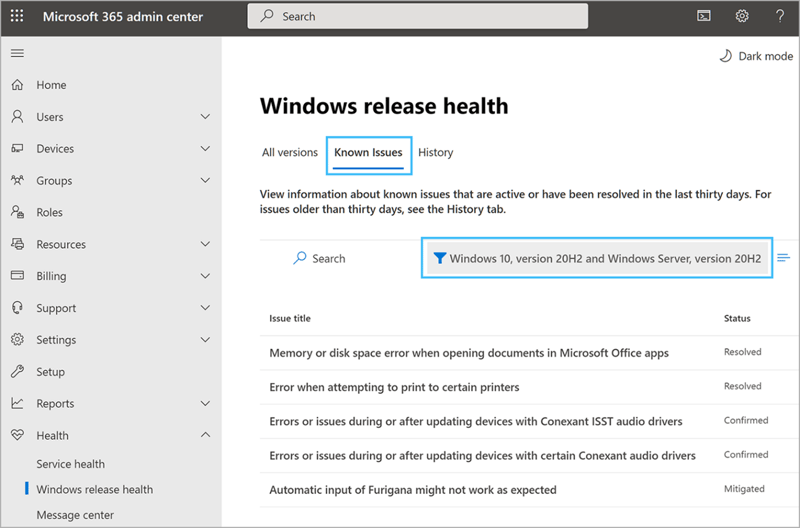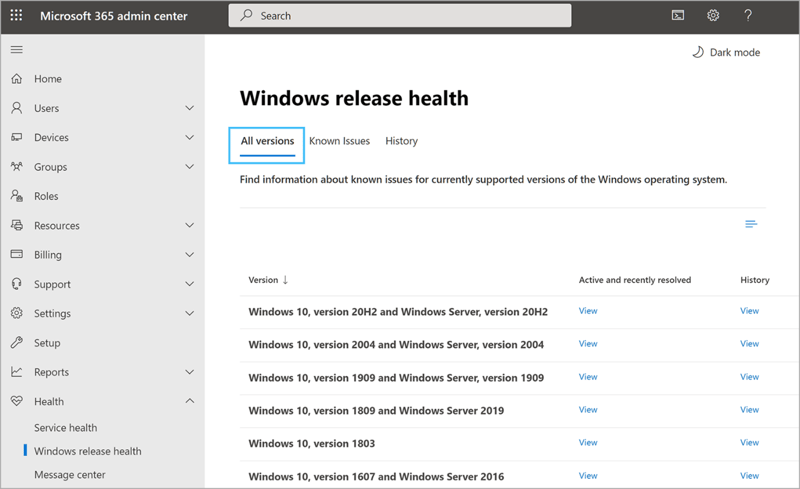- Articles
- Enable easier Windows 10 update rollouts with...
Table of Contents
For corporate IT managers at organizations invested in the Microsoft ecosystem, the Microsoft Windows 10 operating system is not going away any time soon. In Microsoft’s most recent annual letter to shareholders, CEO Satya Nadella noted that “[m]ore than 1 billion active devices now run Windows 10” and the OS plays “a critical role in fueling our cloud business and Microsoft 365 strategy.” While the cloud-powered capabilities of Windows 10 make it nothing less than a cornerstone of enterprise computing, the speed at which Microsoft releases critical updates and new features to the OS can cause IT managers to spend a significant amount of their time preparing and deploying those updates to employee devices.
Whether an IT manager is deploying Windows 10 updates quarterly or monthly, they need to know what’s coming from Microsoft. The good news is that IT managers now have a freely-available cloud-based tool for organizations using both Windows 10 and Microsoft 365 apps to keep up with those updates. The Windows Release Health Dashboard for Microsoft 365 is an extension of a publicly-available webpage created by Microsoft in April 2019 as part of a concerted effort at Microsoft to provide more transparency around the rollout of Windows 10 updates. During the Microsoft Ignite 2021 event, it was revealed that detailed Windows release health data is being integrated into the Microsoft 365 Admin Center.
As a Gold-level Microsoft Partner and certified Cloud Services Provider (CSP), Amaxra consultants spend a lot of time with both Microsoft Windows 10 and Microsoft 365 solutions. The Windows Release Health Dashboard for Microsoft 365 provides IT pros and system admins with detailed insights into known issues, suggested workarounds, and the ultimate resolutions related to a typical Windows 10 update rollout. Most importantly, the new dashboard surfaces info about not only the semi-annual feature updates but also the regular monthly cycle of quality updates made available by Microsoft for Windows 10. We believe IT managers will be impressed with the data available to them from the new dashboard.
How the Windows Release Health dashboard works
Access to the new Windows release health dashboard is available to authorized users from inside the Microsoft 365 Admin Center. First, sign into https://admin.microsoft.com with either Global Admin, Service Admin, or Service Support Admin credentials. In the left-hand navigation menu, scroll down to the Health entry and then click the Windows release health option from the drop-down menu:

IT managers will be presented with three tabs at the top of the Windows Release Health dashboard:
- All versions
- Known issues
- History
Each of these tabs can be clicked on to show details related to the rollout and health status of any current or past Windows 10 update. By default, IT managers are shown the All versions tab, which presents them with a list of the most recent Windows 10 releases along with a top-level view of both the active issues and resolutions. Amaxra consultants see this tab as a helpful “level set” for IT managers looking to deploy the latest version of Windows 10 but want to see an overview of all recent releases.
Clicking on the Known Issues tab shows specific information about the known issues reported in the most recent Windows 10 releases. In this tab, an IT manager can either click on the links to review detailed summaries of issues reported over the past 30 days that are impacting an active update rollout.

The status of each issue is classified as either Confirmed (meaning that Microsoft knows it is an issue and is working on a resolution), Mitigated (the known issue has a workaround), or Resolved (the issue is completely fixed).
Clicking on any Issue Title listed on this tab shows an IT manager very detailed information about said issue in a pop-up window. Depending on the status of the issue, this information pop-up is where an IT manager will receive both the root cause analysis from Microsoft along with the specific steps to mitigate or resolve the issue.

Clicking on the History tab reveals detailed status information on all issues that have been previously addressed.
What your organization needs to get the Windows Release Health dashboard
Although the Windows Release Health dashboard is a powerful tool for IT managers at organizations with Microsoft 365, only those organizations with at least the E3 licenses for both Microsoft 365 Enterprise and Windows 10 Enterprise products can get it. While some small to midsized businesses (SMBs) balk at the increased cost of a Microsoft E3 license compared to, say, the Microsoft 365 Business Premium license, Amaxra experts have run the numbers and found the E3 and E5 plans to often be a tremendous value to SMBs.
